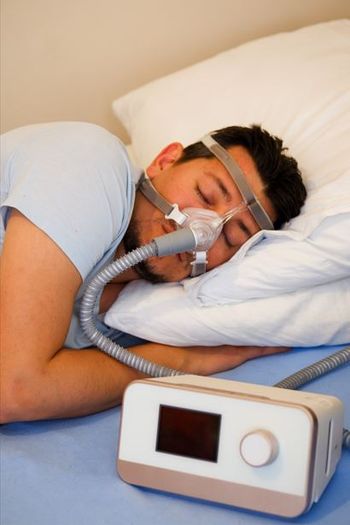
First Comes Pain, Then Comes Insomnia
Good physical and social functioning may help avert insomnia in older people with musculoskeletal pain.
Musculoskeletal pain increases the risk of insomnia at 3 years, but onset of insomnia may be mitigated by improving physical and social function in older adults with pain, a prospective study suggests.
“The majority of patients seeking treatment for pain report insomnia of a severity that warrants clinical attention,”
“Our results suggest that an important option for intervention might be to maintain or improve older people’s physical capacity and social participation for their potential to avert insomnia onset.”
Of 6676 participants 50 years of age and older, both some and widespread pain at baseline were significantly associated with the subsequent onset of any and each of four insomnia symptoms at 3 years.
For example, some and widespread pain were associated with the onset of nonrestorative sleep at an unadjusted odds ratio (OR) of 2.09 (95% CI, 1.59-2.75) for some pain and an OR of 3.98 (95% CI, 3.00-5.27) for widespread pain.
These associations remained largely unchanged when adjusted for age, sex, educational attainment, and occupational class, although further adjustment for anxiety, depression, comorbidity, and other baseline sleep disturbances slightly attenuated the associations at an adjusted OR of 1.57 (95% CI, 1.15-2.13) for some pain and an OR of 2.31 (95% CI, 1.66-3.20) for widespread pain.
Some pain at a fully adjusted OR of 1.30 (95% CI, .93-1.82) and widespread pain at a fully adjusted OR of 1.61 (95% CI, 1.12-2.32) were also associated with trouble falling asleep compared with no pain.
Similarly, compared with no pain, waking up several times a night was associated with both some pain at an adjusted OR of 1.54 (95% CI, 1.24-1.91) and widespread pain at an adjusted OR of 1.78 (95% CI, 1.39-2.29).
Adjusted ORs for trouble staying asleep for both some and widespread pain were similarly elevated at 1.41 (95% CI, 1.08-1.85) and 1.59 (95% CI, 1.18-2.14), respectively.
Importantly, baseline physical limitations and reduced social participation mediated the association between baseline pain and onset of any and each of the 4 insomnia symptoms such that the combination of the two explained up to 68% of the effect of some pain on insomnia onset and 66% of the effect of widespread pain.
All patients 50 years of age and older registered with 6 general practices in North Staffordshire, England, were mailed a baseline questionnaire.
Participants who experienced pain lasting for 1 or more days in the past month were asked to shade their pain on a blank body manikin and were categorized as having no pain, some pain, or widespread pain.
Insomnia was measured at baseline and at 3-year follow-up using the
Physical limitation was measured using the physical functioning scale of the
Some 26.5% of respondents had no pain, 46% had some pain, and 27.5% had widespread pain.
“The total effect of pain on the onset of each insomnia symptom was twice as strong in participants with widespread pain compared with those with some pain,” researchers observed.
“But the combination of physical limitation and reduced social participation mediated a substantial proportion of the total effect of pain on insomnia onset, with physical limitation being a stronger mediator than reduced social participation.”
Targeting pain medically will make some contribution to the prevention or reduction in sleep disturbances in patients who report pain, as investigators suggest.
However, physiotherapy, exercise classes, and psychological interventions that address barriers to physical activities may improve physical functioning even if patients have underlying medical conditions, they add.
“Improving social participation [also] offers the opportunity of reducing insomnia with or without improving physical capacity,” they state, “and may extend beyond clinical management.”
Investigators note, however, the generalizability of their data may be limited by the characteristics of the study sample, the area covered by the study being more deprived in terms of health, education, and employment than England as a whole.
The authors declared no conflicts of interest.
The study was supported financially by the Medical Research Council, UK, and the North Staffordshire Primary Care R&D Consortium.
- Reviewed by
Henry A. Solomon, MD, FACP, FACC Clinical Associate Professor, Weill Cornell Medical College and Dorothy Caputo, MA, BSN, RN, Nurse Planner
This article was first published on
Newsletter
Enhance your clinical practice with the Patient Care newsletter, offering the latest evidence-based guidelines, diagnostic insights, and treatment strategies for primary care physicians.






























































































































































































































































































































